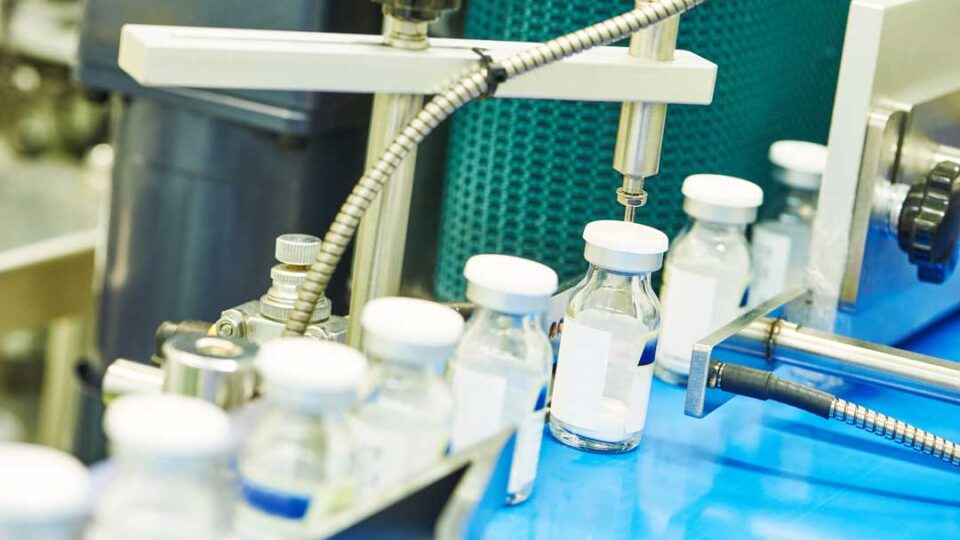Between 2011 and 2020, 1451 Australians died due to exposure to airborne dust and contaminants in the workplace. 90% of these deaths were among men.
In the pharmaceutical industry, dangerous chemicals and compounds are emitted into the air daily. Are you doing enough to protect your workers’ lungs?
Keep reading to learn about the most significant challenges to air quality in the pharmaceutical industry and what you can do about it.
What are the main challenges to air quality in the pharmaceutical industry?
In the Australian pharmaceutical industry, workers’ health is in jeopardy if steps aren’t taken to manage air quality. Here are some of the main challenges to address when maintaining air quality in the pharmaceutical industry:
- APIs – pharmaceutical production processes involve the handling, use, and disposal of medications, active pharmaceutical ingredients (APIs) and other chemical components. These ingredients are released into compressed air in the pharmaceutical industry, affecting air and water quality in the surrounding environments.
- Antibiotic resistance spread – antibiotics can be released into the environment during pharmaceutical production. Consuming or inhaling antibiotics in large amounts can result in resistance, meaning employees and neighbouring individuals will have no recourse should they become sick.
- Greenhouse gas emissions – energy-intensive processes are required in pharmaceutical labs to heat and cool the products. These processes emit carbon dioxide, compromising air quality and contributing to global climate change.
- Dust and particles – when producing pharmaceuticals, dust and particulate matter can be produced from raw materials. When these particles are released into the air, it leads to respiratory problems and air quality degradation.
- Volatile organic compounds – many volatile organic compounds are involved in pharma lab manufacturing processes that produce solvents and contribute to air pollution. The VOCs can interact with other pollutants in the air, causing ground-level ozone and smog that presents a risk to worker health and safety.
These factors combine to degrade air quality in a pharmaceutical manufacturing environment – which is why industrial air filtration systems are necessary.
How does poor air quality affect worker health?
If you don’t manage air quality in a pharmaceutical environment, you will encounter the following health and safety risks:
- Contaminated drugs – cross-contamination between different pharmaceutical drugs could be fatal for consumers and must be avoided at all costs. This is why pharmaceutical labs have strict air quality standards.
- Exacerbating conditions – if workers have pre-existing respiratory conditions, high volumes of air pollutants could lead to the development of more serious respiratory conditions like asthma.
- Allergies – if a worker is allergic to ingredients in your pharmaceutical products, they could face fatal consequences without proper air quality maintenance and regulation.
Top methods to reduce air pollution
Now you know about the risks of air pollution in the pharmaceutical industry, let’s discuss some of the ways to control air pollution. Here are the top recommended solutions and methods:
- Filtration – investing in filtered ventilation solutions will help to promote air circulation, introducing fresh air to the environment while capturing dust and pollutants in a filter. Filtration solutions are the optimal ventilation strategy for environments with a large volume of airborne contaminants.
- Source management – while you can remove contaminants from the air, you can also use preventative measures to ensure contaminants aren’t emitted. Using sealed containers for storage and ensuring proper waste disposal help to manage the source of air pollutants.
- Training – employees at your pharmaceutical facility should receive health and safety training that covers the best ways to prevent ingredients from becoming airborne. They should also receive training on avoiding spills and using the proper equipment when heating or cooling different materials.
Why are exhaust ventilation solutions less suitable for the pharmaceutical industry?
Pharmaceutical industries must be very careful about their effect on the surrounding ecosystems and environment. Simply using industrial exhaust fans for chemicals, volatile organic compounds, and other airborne ingredients into the surrounding atmosphere creates a health risk.
These contaminants can enter the soil, water, and animal habitats surrounding the facility, having a devastating effect on wildlife and water purity. An industrial filter fan will capture these contaminants to prevent them from entering the facility’s surroundings.
Choose Fanquip for pharmaceutical ventilation solutions
When operating a pharmaceutical manufacturing facility, managing air quality is important to prevent contamination and respiratory illnesses on site. The key to managing air quality is implementing best practices for worker training and implementing filtration ventilation solutions.
Need help adhering to health and safety regulations in the pharmaceutical industry? Call our experts at Fanquip, and we can recommend the top ventilation solutions for compliance.
